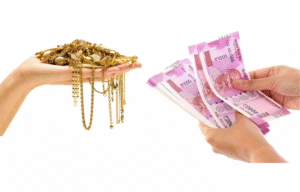A/B Testing PPC Landing Pages: How to Optimize for Maximum Conversions

In the intense market of digital marketing, Pay-Per-Click (PPC) advertising continues to be a strong vehicle for bringing focused traffic to your site. The achievement of your PPC campaigns depends on more factors than just appealing advertising copy and smart keyword voice identification. PPC ad landing pages are vital for changing site visitors into paying customers. This is the background against which A/B testing operates, enabling marketers to improve their Google Ads landing pages and improve conversions.
Understanding A/B Testing for PPC Landing Pages
Often called split testing, A/B testing compares two variants of a web page to uncover which performs better. In the context of PPC campaigns, that often means preparing two different landing pages and dividing traffic between them to determine which one generates more conversions.
The process involves:
- Creating a hypothesis
- Designing two versions of the landing page (A and B)
- Randomly dividing traffic between the two versions
- Collecting and analyzing data
- Determining a winner based on statistical significance
Why A/B Testing is Crucial for PPC Success
There are several advantages to doing A/B testing on your landing pages for PPC. Such as:
Improved Conversion Rates: As time passes, regular iteration and upgrading of your landing pages may cultivate reliable growth in your conversion rates.
Lower Cost Per Acquisition: Increased conversion rates represent you receiving greater value from your ad expenditure, and as a result, lower your cost per acquisition.
Better User Experience: A/B testing gives you a grasp of what engages your audience so you can generate landing pages that are more engaging and user-friendly.
Data-Driven Decision Making: It’s best practice to bypass counting on your instincts or assumptions; in its place, A/B testing delivers direct information to support building your marketing strategies.
Key Elements to Test on Your Google Ads Landing Page
Consider experimenting with the following components while doing A/B tests:
Headlines: Review a number of headlines in order to identify those that stimulate interest and communicate importance effectively.
Call-to-Action (CTA): Analyze several hues, fonts, dimensions, and places of the CTA button to boost the count of click interactions.
Form Fields: Should your landing page contain a form, it’s important to test the number of fields, their arrangement, and any accompanying micro copy.
Images and Videos: User engagement may be greatly affected by visual elements. Try different forms of photographs or video to find what is most engaging for your audience.
Page Layout: Analyze different layout designs to recognize the approach that yields the greatest productivity in delivering your information and encouraging user conversion.
Copy Length and Tone: Assess a mixture of copy styles that covers different tones (careful versus relaxed) and various lengths (fewer versus more words), in order to see which style your audience prefers.
Social Proof: To optimize your trustworthiness, add client feedback, trust badges, or the logo of brands from your clients.
Best Practices for A/B Testing PPC Landing Pages
Use these recommended procedures to maximise the results of your A/B tests:
Test One Element at a Time: You’ll achieve greater accuracy in isolating what influences your conversion rates if you modify only one element in each test.
Use a Large Enough Sample Size: Make certain you receive enough traffic in order to obtain statistical significance in your results.
Run Tests for an Appropriate Duration: Let your tests continue for a period long enough to cover the fluctuations in daily or weekly traffic and behavior.
Set Clear Goals: Understand what success means to you before beginning your test. This might produce an upsurge in form submissions, an overview of deals, or further definite actions.
Consider Segmentation: It is possible that different audience segments will respond in varied ways to your tests. A possible smart move would be to execute individual tests for different demographic groups or a collection of traffic sources.
Keep Your PPC Ads Consistent: Keep coherence and satisfy user expectations by guaranteeing consistency between your Google Ads landing page and the messages in your pay-per-click ads along with your offerings.
Personalized Landing Pages: The Next Level of Optimization
During your A/B testing to refine landing pages, consider moving your optimization tactics a step ahead with personalized landing pages. These vary dynamically, based on information about user data, their actions, or preferences.
Improved Relevance: When you design content for particular user segments, you can generate more engaging and meaningful user experiences.
Higher Conversion Rates: Users generally enjoy higher conversion rates because they feel that the personalized experiences created exactly for their needs.
Better Ad Quality Scores: Google tackles relevance, which means that landing pages personalized to the user may improve your Ad Quality Scores, in turn giving you superior ad positions and less costs.
Enhanced User Experience: The type of content that feels personal encourages a more favorable brand impression with visitors.
Implementing personalized landing pages can involve:
Dynamic Content: Personalize headlines, visuals, or deals as related to their location, their industry, or some of their easily identified traits.
Behavioral Targeting: Create content that corresponds with the interaction history of the user with your site or advertisements.
Contextual Relevance: Isolate landing page content so that it matches the specific keywords or ad groups that initiated your PPC ad.
Measuring Success and Iterating
Iteration is the key to successful A/B testing. Following every test:
Analyze the Results: Concentrate on conversion rates together with a variety of other factors. Research secondary metrics by including the amount of time spent on the web page, the bounce rate, and micro-conversions.
Document Your Findings: Write down what you have checked alongside the results to help you formulate future projects and to prevent conducting unsuccessful tests yet again.
Apply Learnings: Put successful changes in place over relevant landing pages and use the insights for designing future tests.
Plan Your Next Test: Apply the knowledge you have gathered to craft new hypotheses for directing your ongoing testing.
Conclusion
Bear in mind that advanced tools and platforms can greatly enhance your optimization workflow when you begin A/B testing. Fibr.ai is an AI platform that stands out by helping to enhance and support your A/B testing workflows. Due to its sophisticated analytics and machine learning capabilities, fibr.ai can give you important insights and recommendations for the optimization of your PPC landing pages, keeping you ahead of the competition and helping you get the greatest ROI from your digital marketing efforts.







